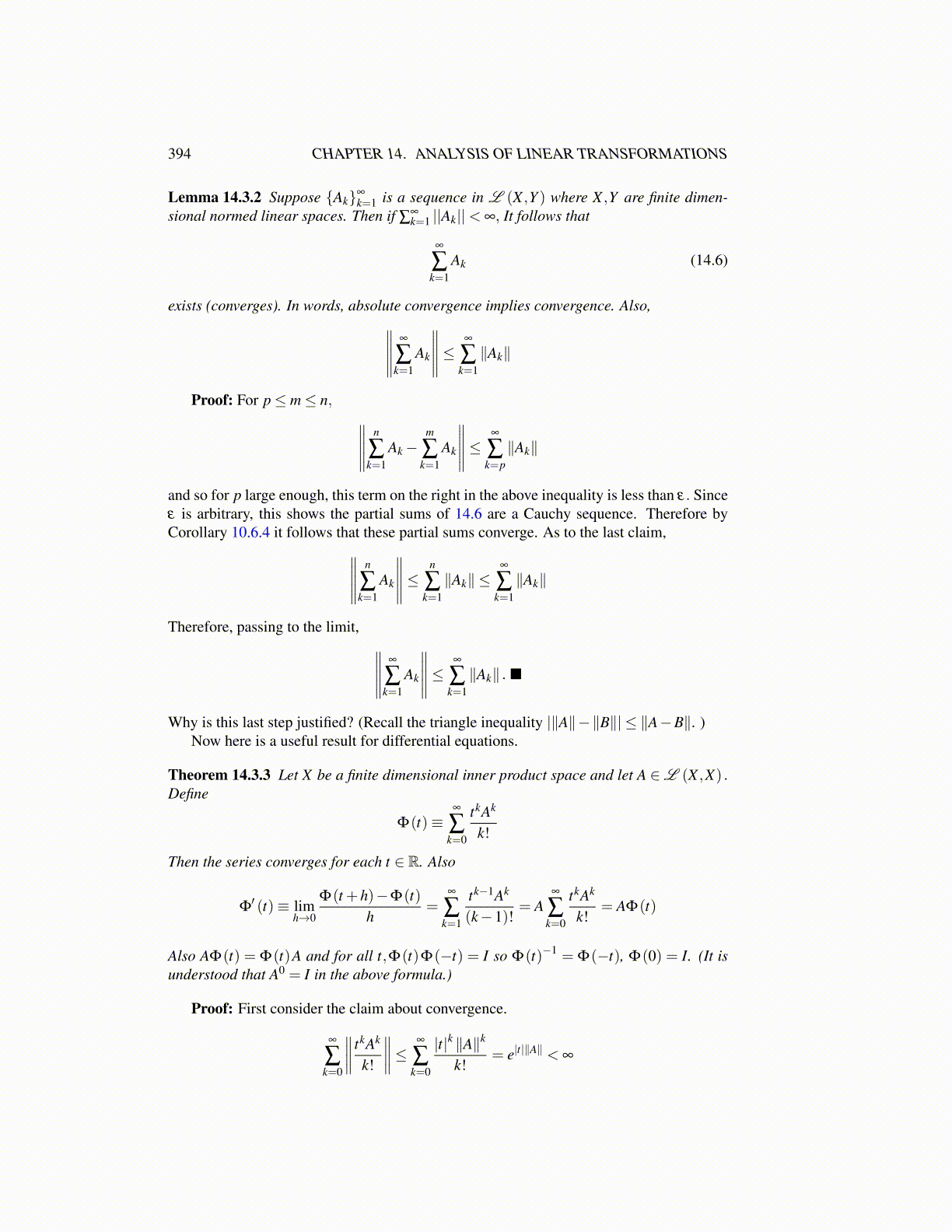
394 CHAPTER 14. ANALYSIS OF LINEAR TRANSFORMATIONS
Lemma 14.3.2 Suppose {Ak}∞
k=1 is a sequence in L (X ,Y ) where X ,Y are finite dimen-sional normed linear spaces. Then if ∑
∞k=1 ||Ak||< ∞, It follows that
∞
∑k=1
Ak (14.6)
exists (converges). In words, absolute convergence implies convergence. Also,∥∥∥∥∥ ∞
∑k=1
Ak
∥∥∥∥∥≤ ∞
∑k=1∥Ak∥
Proof: For p≤ m≤ n, ∥∥∥∥∥ n
∑k=1
Ak−m
∑k=1
Ak
∥∥∥∥∥≤ ∞
∑k=p∥Ak∥
and so for p large enough, this term on the right in the above inequality is less than ε. Sinceε is arbitrary, this shows the partial sums of 14.6 are a Cauchy sequence. Therefore byCorollary 10.6.4 it follows that these partial sums converge. As to the last claim,∥∥∥∥∥ n
∑k=1
Ak
∥∥∥∥∥≤ n
∑k=1∥Ak∥ ≤
∞
∑k=1∥Ak∥
Therefore, passing to the limit, ∥∥∥∥∥ ∞
∑k=1
Ak
∥∥∥∥∥≤ ∞
∑k=1∥Ak∥ . ■
Why is this last step justified? (Recall the triangle inequality |∥A∥−∥B∥| ≤ ∥A−B∥. )Now here is a useful result for differential equations.
Theorem 14.3.3 Let X be a finite dimensional inner product space and let A ∈L (X ,X) .Define
Φ(t)≡∞
∑k=0
tkAk
k!
Then the series converges for each t ∈ R. Also
Φ′ (t)≡ lim
h→0
Φ(t +h)−Φ(t)h
=∞
∑k=1
tk−1Ak
(k−1)!= A
∞
∑k=0
tkAk
k!= AΦ(t)
Also AΦ(t) = Φ(t)A and for all t,Φ(t)Φ(−t) = I so Φ(t)−1 = Φ(−t), Φ(0) = I. (It isunderstood that A0 = I in the above formula.)
Proof: First consider the claim about convergence.
∞
∑k=0
∥∥∥∥ tkAk
k!
∥∥∥∥≤ ∞
∑k=0
|t|k ∥A∥k
k!= e|t|∥A∥ < ∞